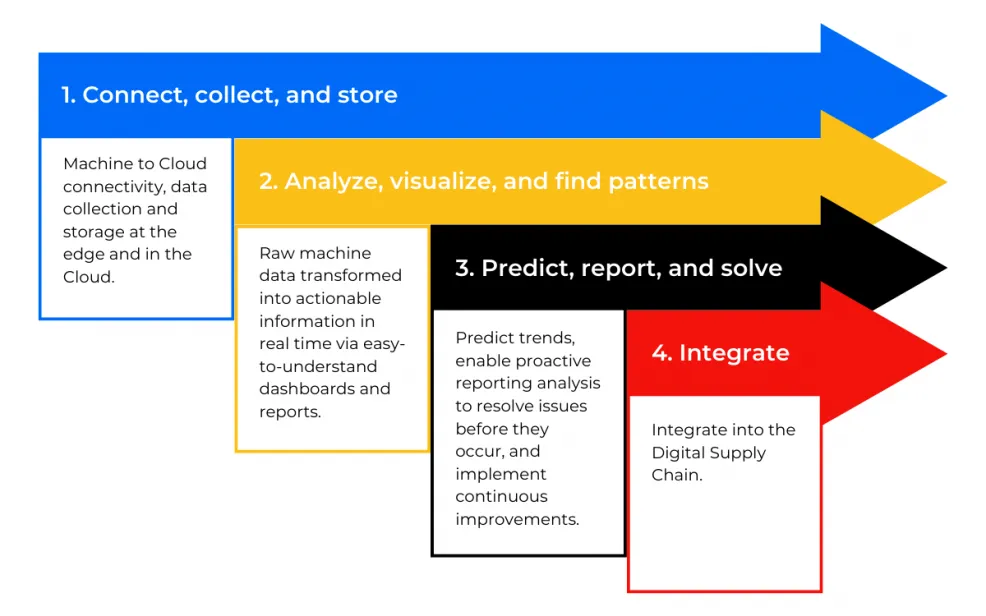The Pursuit to Replace Hydraulics - Part 3
In earlier instalments we explored how hydraulic systems, the traditional mainstay of factory moving parts, can give very high power density, yet may be costly to install and maintain—and adding controllability comes at cost. We discussed how pneumatic systems present a more affordable option, however offer less power density and efficiency—and, again, little controllability without expensive add-ons.
Electric systems offer key advantages over both.
Electric actuators bring higher efficiency
Electrics typically are more efficient than both alternatives. For instance:
- Less energy is lost (as the electricity need not be converted into another motive power), and power is consumed only during operation, with no compression or cooling systems running in the background.
- You economize on people skills, with just the one technology to master (unlike hydraulic systems, which require three different trades to service the lines). Your existing electrical and controls engineers will be able to maintain electric actuator systems with no extra training.
- With fewer moving or degradable parts, maintenance overall is very simple, and the machinery is reliable and long-lived.
Electric actuators bring greater control
Electrics are more controllable than their rivals on many counts. For example:
- Servo systems can perform complex motion profiles; and speed, pressure, as well as torque are infinitely variable within the scope of the servo line.
- Motions can be timed or interpolated with other machine movements and other servos.
- Staff don’t need to enter the line to make adjustments: all aspects of motion are able to be remotely adjusted by an operator (who need not even be on site). For instance, repositioning a servo is easy, whereas hydraulic systems require a mechanical intervention to change the stroke.
Though pneumatic systems do have their place, electric systems outplays them in terms of both power and dynamic control.
Electric actuators bring better data and connectivity
“The greatest advantage of an electric actuator system is its built-in capacity for data and connectivity making it the ideal fit for smart manufacturing,” says Facteon’s Ray Russell, Advanced Engineer (Controls). “Regardless of your scale of operation, if you’re not yet using data in your operation, switching to electrics is your ticket to accessing IIoT. You also avoid the costly and complex option of retrofitting sensors on an existing line—something we don’t recommend with hydraulic systems, as it can cause unwanted complications.”
Data collection, information, and analysis enabled by electric actuators
Your journey towards IIoT begins with connection: linking the sensors in your automation machinery to cloud- or edge-based systems enabling data collection and storage. Your systems can then process raw machine data to produce information and analysis.
With actuators now active components in each process chain, your system can now operate predictive maintenance and real-time quality control, while also monitoring and optimizing your operation—from energy and resource efficiency (improving your sustainability) to logistical flows (fine-tuning your productivity).
“Through machine learning and vision, any trends, such as tool wear or quality/accuracy drift, can be detected and corrected,” says Ray. “Machine tuning is now possible without the need for operators to enter the line, therefore improving worker safety.”
You may find you have more data than you can initially handle. “Our engineers implement the scalable COSMOLine software,” notes Facteon’s Reinaldo Silva, Software Product Manager, “which can be customized and integrated with your existing automation and IT/OT systems if required.” The software captures and visualizes data to produce analysis, and reports alerts in real time, with all the information you need for quick decision-making brought to one easy-to-understand dashboard, which can be accessed—from anywhere—by any staff member.

As a long-term value addition, the connectivity, flexibility, and modularity of electric actuator systems will future-proof your operation. At Facteon we can assist you in adopting IIoT technology, whether it’s a step at a time or across your production line.
Find out more
Speak with one of our consultants to find out about the alternatives to hydraulics for your factory automation solutions. Contact Facteon via our contact page.

Ray Russell
Ray is a Control Systems Engineer by trade, he holds a depth of experience in avionics and automated cell integration. He is a member of Facteon's Advanced Engineering team and works across the business through the design, development and commissioning phases of custom production machinery and off-the-shelf robotics integration. He also has extensive experience and understanding of machinery safety to international ISO standards.
He also works closely with Facteon's Industrial IoT products team in the identification, development and integration of sensing technologies for data processing and analysis of machinery effectiveness, predictive maintenance and OEE.

Reinaldo Silva
Reinaldo is our Global GM of Sales, and Board Director. He is currently responsible for our global sales operations and customer experience across our markets in Australasia, USA, Latin America and Europe.
His experience leading a number of different functions at Facteon over the years has provided him with a great level of understanding, and hands-on experience on what it takes to deliver great outcomes to our customers and partners.

Greg Purcell
Greg’s role involves leading the implementation of Facteon’s Industrial IoT solutions for our software product, COSMOline. With his prior experience as a Facteon Control Systems Engineer, Greg brings a unique perspective and a strong understanding of PLC’s. He’s also a certified integrator of Ignition by Inductive Automation. Greg plays a key role in defining and implementing Facteon’s modern day SCADA approach that aims to prevent SCADA becoming a bottleneck for machine data.

